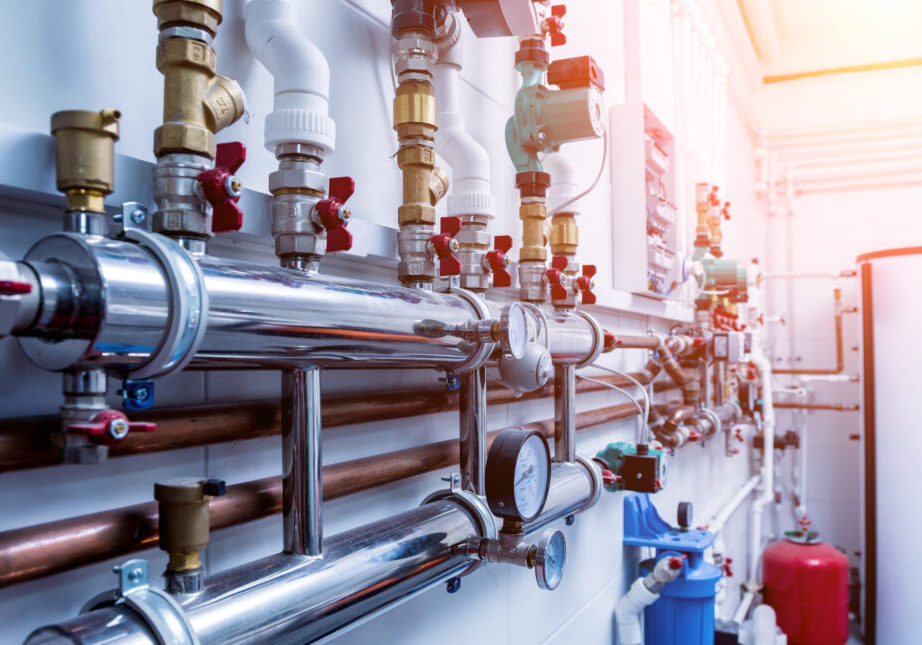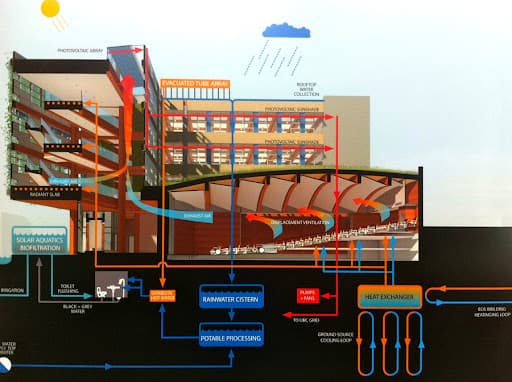The Basics to Your Home's Plumbing System Anatomy
The Basics to Your Home's Plumbing System Anatomy
Blog Article
How do you really feel with regards to Plumbing Installation 101: All You Need to Know?

Understanding how your home's pipes system works is important for each homeowner. From providing tidy water for drinking, cooking, and showering to securely removing wastewater, a well-kept plumbing system is critical for your family's health and wellness and comfort. In this comprehensive overview, we'll explore the intricate network that composes your home's plumbing and offer ideas on maintenance, upgrades, and handling typical problems.
Intro
Your home's pipes system is greater than simply a network of pipes; it's a complex system that guarantees you have access to clean water and effective wastewater elimination. Understanding its elements and exactly how they collaborate can assist you prevent costly repair services and ensure every little thing runs smoothly.
Standard Elements of a Plumbing System
Pipelines and Tubing
At the heart of your pipes system are the pipelines and tubes that lug water throughout your home. These can be constructed from numerous materials such as copper, PVC, or PEX, each with its benefits in regards to durability and cost-effectiveness.
Fixtures: Sinks, Toilets, Showers, etc.
Components like sinks, commodes, showers, and bathtubs are where water is utilized in your home. Comprehending just how these fixtures link to the pipes system helps in identifying issues and preparing upgrades.
Shutoffs and Shut-off Factors
Shutoffs control the flow of water in your pipes system. Shut-off shutoffs are important throughout emergency situations or when you require to make repairs, permitting you to isolate parts of the system without disrupting water flow to the entire house.
Supply Of Water System
Main Water Line
The primary water line links your home to the local water or a private well. It's where water enters your home and is distributed to various fixtures.
Water Meter and Pressure Regulator
The water meter measures your water use, while a stress regulatory authority makes certain that water flows at a safe stress throughout your home's plumbing system, preventing damages to pipelines and components.
Cold Water vs. Warm water Lines
Recognizing the difference between cold water lines, which supply water straight from the major, and warm water lines, which lug warmed water from the hot water heater, assists in fixing and planning for upgrades.
Drain System
Drain Pipes and Traps
Drain pipelines bring wastewater far from sinks, showers, and commodes to the drain or sewage-disposal tank. Traps prevent sewage system gases from entering your home and also catch debris that can create clogs.
Air flow Pipelines
Ventilation pipelines enable air right into the drain system, avoiding suction that can slow water drainage and trigger catches to vacant. Proper air flow is necessary for preserving the honesty of your plumbing system.
Relevance of Appropriate Drainage
Making sure proper water drainage avoids backups and water damages. Routinely cleaning up drains and keeping traps can protect against expensive fixings and extend the life of your pipes system.
Water Heating Unit
Sorts Of Water Heaters
Hot water heater can be tankless or conventional tank-style. Tankless heating systems heat water as needed, while tanks save warmed water for immediate usage.
Upgrading Your Pipes System
Factors for Upgrading
Updating to water-efficient fixtures or changing old pipes can improve water high quality, lower water expenses, and increase the worth of your home.
Modern Pipes Technologies and Their Benefits
Discover technologies like wise leakage detectors, water-saving commodes, and energy-efficient water heaters that can save money and lower environmental impact.
Price Factors To Consider and ROI
Compute the upfront expenses versus long-lasting financial savings when thinking about plumbing upgrades. Several upgrades pay for themselves with minimized energy costs and less repair work.
How Water Heaters Link to the Plumbing System
Comprehending exactly how water heaters connect to both the cold water supply and hot water circulation lines helps in diagnosing concerns like insufficient hot water or leakages.
Upkeep Tips for Water Heaters
Routinely flushing your water heater to eliminate sediment, inspecting the temperature level setups, and evaluating for leakages can expand its lifespan and improve energy effectiveness.
Typical Plumbing Problems
Leakages and Their Reasons
Leakages can occur as a result of maturing pipelines, loosened installations, or high water stress. Addressing leaks immediately prevents water damage and mold development.
Obstructions and Blockages
Blockages in drains pipes and toilets are commonly brought on by flushing non-flushable things or an accumulation of grease and hair. Making use of drainpipe screens and being mindful of what decreases your drains pipes can stop obstructions.
Indicators of Plumbing Problems to Look For
Low tide pressure, sluggish drains, foul odors, or unusually high water bills are indicators of possible pipes problems that should be addressed promptly.
Pipes Upkeep Tips
Normal Examinations and Checks
Arrange annual plumbing inspections to capture concerns early. Seek indicators of leakages, corrosion, or mineral build-up in faucets and showerheads.
Do It Yourself Upkeep Tasks
Easy tasks like cleaning faucet aerators, checking for bathroom leaks utilizing dye tablets, or insulating exposed pipelines in cold environments can protect against significant pipes concerns.
When to Call a Specialist Plumbing Professional
Know when a pipes concern calls for specialist experience. Trying intricate fixings without correct understanding can result in more damages and greater repair service costs.
Tips for Lowering Water Use
Basic routines like repairing leaks promptly, taking much shorter showers, and running complete tons of laundry and dishes can conserve water and lower your utility costs.
Eco-Friendly Pipes Options
Think about sustainable pipes products like bamboo for floor covering, which is durable and green, or recycled glass for kitchen counters.
Emergency Readiness
Steps to Take During a Pipes Emergency
Know where your shut-off valves lie and exactly how to shut off the water in case of a ruptured pipe or major leakage.
Relevance of Having Emergency Situation Get In Touches With Convenient
Maintain contact details for regional plumbings or emergency services readily offered for quick feedback throughout a pipes dilemma.
Environmental Impact and Preservation
Water-Saving Fixtures and Home Appliances
Installing low-flow faucets, showerheads, and toilets can dramatically decrease water use without sacrificing efficiency.
DIY Emergency Situation Fixes (When Suitable).
Short-lived repairs like making use of duct tape to patch a dripping pipeline or putting a bucket under a leaking tap can reduce damage till a professional plumber gets here.
Conclusion.
Recognizing the anatomy of your home's pipes system encourages you to maintain it successfully, conserving time and money on repair work. By complying with normal maintenance routines and remaining educated about modern plumbing modern technologies, you can guarantee your plumbing system operates effectively for several years to come.
HOW YOUR PLUMBING SYSTEM WORKS
Which Pipes Do What?
Blue lines = fresh water supply entering the building Red lines = hot water supply entering the building Grey lines = pipes carrying waste away from the building and venting pipes carrying gases away from the building (through the roof) YOUR MAIN PLUMBING SYSTEMS
There are two main plumbing systems that support your home s basic plumbing needs one that brings clean water into your home, and one that sends dirty water away from your home. Connected to the toilet, bath, shower, and other faucets in your home, these two systems keep your water flowing in the right directions.
ACCESSING FRESH WATER
Fresh and clean water is brought into your home through the main water supply line . Filtered through one pipe, this water is pressured to flow into the various fixtures in your home at any given time.
This water can be sourced from a well located on your property, a pond or river (mostly cottages), or, as in most cases, from the city s municipal water treatment centre. However, it is important to note that water that is untreated, such as the water siphoned from ponds or rivers, may not be safe to drink. Personal water supplies always need to be treated for hardness and contaminants before consumed.
MUNICIPAL WATER SUPPLIES
Improve taste and odour Remove sediment Eliminate hardness Reduce chlorine COLD WATER SUPPLY VS. HOT WATER SUPPLY
Cold water flows into your home or building through the service line, which then distributes hot or cold water to your fixtures. This line is most commonly run through a central column that runs floor to floor. Hot water runs in short and straight pipes as the longer the pipeline, the more heat that will be lost in the transfer. Having shorter pipes also allows residents to access hot water more quickly.
WASTE WATER SYSTEM
Your wastewater system is divided into two parts pipes that send wastewater away from your home and venting pipes that send sewer gas away from your home. Sewage water travels through pipes that flush the water and waste towards local sewers that are operated and managed by your city or town. Most sewer systems rely on gravity to move the wastewater to where it needs to go.
The further away from your toilet or sink, the larger wastewater pipes become. This allows for waste to be disposed of from various parts of your home or business at once without pipe blockages. The angle and flow of these pipes are also essential for keeping your waste pipes clear of build up.
https://harrisplumbing.ca/how-your-home-plumbing-system-works/

I have been very excited about Plumbing Installation 101: All You Need to Know and I hope you liked the new blog entry. Do you know another person who is occupied with the topic? Be sure promote it. Thanks for taking the time to read it.
Call Today Report this page